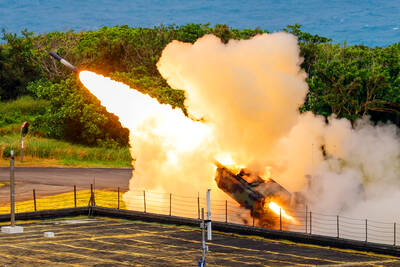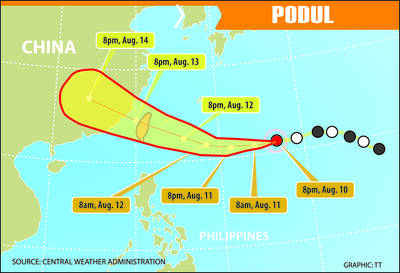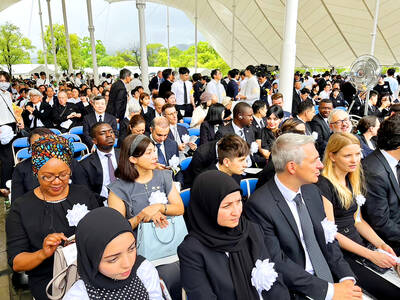Samsung Electronics Co said yesterday that a liquid-crystal-display (LDC) production line it plans to build with Japan's Sony Corp will have a capacity similar to an already existing facility that makes 50,000 glass sheets a month.
The two companies formed a joint venture called S-LCD in April 2004. Last August, they began shipping panels for large flat-screen TVs from its 1.8 trillion won (US$1.9 billion) eighth-generation line, called 8-1.
"The 8-2 LCD line's production capacity will be similar to that of the 8-1 line," said Cho Yeong-duk, vice president of Samsung's LCD business, referring to the previous line set up by the joint venture that makes 50,000 sheets a month.
Eight 46-inch or six 52-inch TV panels can be cut from each sheet, which measures 2,200mm by 2,500mm.
Also yesterday, Japan's Nikkei Shimbun reported that Sony and Samsung have reached a basic agreement to invest ¥200 billion (US$1.9 billion) in the second line.
Cho said the "deal is not finalized yet," but added that the line was expected to cost 1.8 trillion won or about ¥200 billion.
He had told Dow Jones Newswires last week that Samsung and Sony -- which compete in the global home appliances and consumer electronics market, including LCD TVs -- are in the final stages of talks that have been going on since August about their South Korean joint venture to set up a second eighth-generation LCD line.
Cho said last week that Samsung and Sony will likely invest a similar amount of money in the second line.
His comments followed an announcement by Sony that it would take a one-third stake in Sharp Corp's US$3.5 billionLCD plant in Japan to meet rising demand for flat-screen TVs.
Meanwhile, Pioneer Corp is reviewing its plasma display business, a company official said yesterday, while Japanese media reports said the company plans to stop producing them.
Ema Suzuki, a spokeswoman for the Tokyo-based maker of high-end audio equipment, said the firm's plasma display business is suffering from sluggish growth and that it is reviewing the business.
Her comments came as the Nikkei Shimbun reported yesterday that Pioneer is finalizing plans to withdraw from producing plasma panels as early as this year and procure panels from Matsushita Electric Industrial Co, which has the world's largest market share. Kyodo news agency carried a similar report.
The spokeswoman said no decision had been reached as of yesterday, adding that Pioneer president Tamihiko Sudo will unveil business plans on Friday at a news conference.
Nikkei said that the company had originally planned to ship 720,000 plasma panel TVs for the latest fiscal year, but later revised the plan to 480,000 amid sluggish sales. Pioneer's plasma TV business is expected to post ¥10 billion in deficit, the report said.
Last year, Pioneer announced a capital and operations tie-up with another electronics maker Sharp Corp. The alliance allows Pioneer to procure Sharp's LCDs.
Nikkei said that Pioneer will shut down one of its three production sites in Japan for plasma displays as early as this year and that the remaining two factories will focus on assembling TVs.

DEFENSE: The first set of three NASAMS that were previously purchased is expected to be delivered by the end of this year and deployed near the capital, sources said Taiwan plans to procure 28 more sets of M-142 High Mobility Artillery Rocket Systems (HIMARS), as well as nine additional sets of National Advanced Surface-to-Air Missile Systems (NASAMS), military sources said yesterday. Taiwan had previously purchased 29 HIMARS launchers from the US and received the first 11 last year. Once the planned purchases are completed and delivered, Taiwan would have 57 sets of HIMARS. The army has also increased the number of MGM-140 Army Tactical Missile Systems (ATACMS) purchased from 64 to 84, the sources added. Each HIMARS launch pod can carry six Guided Multiple Launch Rocket Systems, capable of

TRAJECTORY: The severe tropical storm is predicted to be closest to Taiwan on Wednesday and Thursday, and would influence the nation to varying degrees, a forecaster said The Central Weather Administration (CWA) yesterday said it would likely issue a sea warning for Tropical Storm Podul tomorrow morning and a land warning that evening at the earliest. CWA forecaster Lin Ting-yi (林定宜) said the severe tropical storm is predicted to be closest to Taiwan on Wednesday and Thursday. As of 2pm yesterday, the storm was moving west at 21kph and packing sustained winds of 108kph and gusts of up to 136.8kph, the CWA said. Lin said that the tropical storm was about 1,710km east of Oluanpi (鵝鑾鼻), Taiwan’s southernmost tip, with two possible trajectories over the next one

Tropical Storm Podul strengthened into a typhoon at 8pm yesterday, the Central Weather Administration (CWA) said, with a sea warning to be issued late last night or early this morning. As of 8pm, the typhoon was 1,020km east of Oluanpi (鵝鑾鼻), Taiwan’s southernmost tip, moving west at 23kph. The storm carried maximum sustained winds of 119kph and gusts reaching 155kph, the CWA said. Based on the tropical storm’s trajectory, a land warning could be issued any time from midday today, it added. CWA forecaster Chang Chun-yao (張竣堯) said Podul is a fast-moving storm that is forecast to bring its heaviest rainfall and strongest

CRITICISM: It is deeply regrettable that China, which is pursuing nuclear weapons, has suppressed Taiwan, which is pursuing peace, a government official said Representative to Japan Lee Yi-yang (李逸洋) yesterday accused Beijing of interference after Taiwan’s official delegation to the Nagasaki Peace Memorial Ceremony in Japan was assigned seating in the “international non-governmental organizations [NGO]” area. “Taiwan is by no means an international NGO, but a sovereign nation that is active on the international stage,” Lee said. Lee and Chen Ming-chun (陳銘俊), head of the Taipei Economic and Cultural Office (TECO) in Fukuoka, attended the ceremony in Nagasaki yesterday, which marked the 80th anniversary of the atomic bombing of the city. That followed Lee’s attendance at the Hiroshima Peace Memorial Ceremony on Wednesday